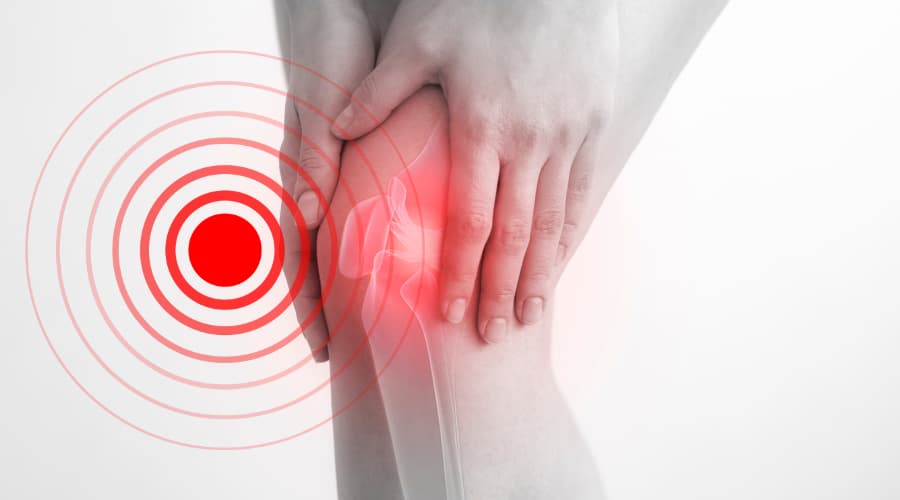Extracorporeal shock wave therapy (ESWT) is an innovative treatment that delivers shock waves to soft tissue that has sustained an injury. The non-invasive treatments are used to promote healing and to reduce pain. Research shows the benefits of ESWT and is considered to be a viable option in the treatment of athletes and non-athletes with soft tissue injuries.
ESWT and Tendon Tissue
Tendons are composed of a band of fibrous tissues that connect muscles to bones. This connective tissue can withstand great deals of tension. However, when the tendons are overused or suffer from trauma, this can result in degeneration and inflammation. The worst-case scenario is when tendons rupture. In the past, it was believed that the tenocytes in tendons were not able to be repaired.
The tenocytes are the microscopic components found in tendons along with the Extra Cellular Matrix (ECM)are composed of elastin, collagen, and ground substance. New research has found that Matrix Metallo Proteinases (MMPs) can play a part in rebuilding and repairing of the ECM in tendons during the important healing stage. There are other growth factors that are significant during the tendon healing process and these are all being studied in conjunction with the use of ESWT.
According to the US National Library of Medicine and National Institute of Health, there is much interest in the use of ESWT in treating tendon tissue. An article published in June of 2017 in the Muscle, Ligaments and Tendons Journal states that the success rate of ESWT therapy has ranged from 60% to 80% in treating plantar fasciitis, epicondylitis, and achilles tendinitis.
In the past, treatment therapies such as lithotripsy used shockwaves to tear down the renal stones. The current ESWT treatment microscopically causes responses in the tissue to induce regeneration. Studies are being conducted to research the effects that have produced clinical success.
History of Shock Wave Therapy
The definition of shockwaves is the transient pressure oscillations or pressure waves that are sent in three dimensions to induce a pressure increase in the span of a few nanoseconds. There is an increase in the pressure impulses that rise in positive pressure from 5 to 120 MPa. ESWT was first used in 1980 to destroy kidney stones. The use of disintegrating kidney stones progressed to other uses such as decalcifying musculoskeletal disorders. In 1933 it was first used to decalcify tendonitis in the rotator cuff.
Calcium deposits were documented to decrease by X-ray, but there were other therapeutic benefits as a result of the ESWT. Conversely, ESWT was used on the tendon insertion for plantar fascia calcifications. There was no indication that the heel spurs were decreased, but the treatments were very effective in reducing the pain. The success rate for pain reduction was 81% which proved more effective than operative treatments. Since this treatment is so effective and non-invasive, the FDA approved a grant for ESWT devices in treating plantar heel pain.
Currently, there is much interest in using ESWT as an angiogenetic, antalgic, and for its anti-inflammatory effects in clinical treatments. Physicians are using ESWT in the parameter of Energy Flux Density in applied treatments of pseudoarthrosis with a 72% rate of success.
Shockwaves for Chronic Tendinopathy
ESWT can be used to alleviate the symptoms of tendon inflammations in hips, knees, shoulders, heels, elbows, and on the soles of feet. It can also be used to treat calcific tendinopathy in the shoulder, greater trochanteric pain, plantar fasciitis, patella and achilles tendinopathy, proximal hamstring tendinopathy, and golfers and tennis elbow.
Studies in radial shockwave therapy involve a series of shockwaves applied to the area in pain. This mechanical wave initiates an inflammation-like condition to the area being treated. The body’s response is to increase the circulation of blood and increase metabolism which accelerates the healing process. The shockwaves help to break down the injured tissue and reduce calcifications.
Advantages of Shockwave Therapy
- Treatments are non-surgical and non-invasive
- No medications or anaesthesia required
- Side effects are minimal and include redness, small bruises, and possible transient pain
- No record of serious complications
- Quick treatments – 30-minute treatments, 3 to 4 sessions a week apart
- Can provide immediate pain relief
- Improvements can continue up to 6 to 8 weeks following treatments
Who Can Benefit from ESWT?
Clinical trials indicates it is effective and safe for treating tendinopathy anywhere in the body.
Dr. Finnoff from the Mayo Clinic is using ESWT currently for treating great recalcitrant tendinopathy in many parts of the body. The Mayo sports medicine physicians conclude the ESWT has benefits in treating these areas of tendinopathy:
- Plantar fascia
- Achilles’s tendons
- Rotator cuff
- Peroneal
- Lateral epicondyle
- Posterior tibial
- Gluteus medius and minimum
- Hamstring
- Patellar tendon
- Rectus femoris
- Quadricep
Success had been had using ESWT on athletes who sustain an injury in the middle of the season and who don’t want to have surgery. After all the standard non-invasive treatments have been tried, ESWT can be an option if their injury is preventing them from practising or playing. Options such as surgical debridement, needle tenotomy, and experimental regenerative treatments, will require longer recovery periods, are riskier, and more expensive. ESWT is a great option that won’t end an athlete’s season.
Success Rate for Radial Shockwave
There has been a 77% rate of improvement in chronic tendinopathies in injuries that have not shown improvement through other treatments. Depending on the tendon being treated, there have been different success rates. Calcific tendinopathy in the shoulder has had an 85% success rate. in its use to alleviate the pain of tennis elbow there has been a 50% success rate with an average treatment time of 12 weeks.
Healing and Returning to Play
ESWT treatments can have some pain associated with them, but the pain is usually brief and patients have been able to withstand the pain for the short duration of the treatments. Pain has been recorded at no more than a 7 out of 10 in intensity and the frequency of the treatment frequency can be adjusted if needed.
As previously noted, there may be some pain following the treatment but this is usually mild and diffused. It can last from a few hours to a day. ESWT causes an inflammatory reaction in the tissue which stimulates the body to heal. You can use a pain reliever after treatment if necessary. It is not recommended to use an anti-inflammatory or ice as this will interfere with the principles behind the treatment.
It is strongly recommended that patients wait for 48 hours after ESWT treatments before engaging in an activity that causes stress to the tendon being treated. You can drive and perform any non-stressful activities immediately after treatment.
There is no need for any rehabilitation after shockwave treatments. The effects can be improved by engaging in isometric exercises following the course of the treatments. You may be given an exercise programme by the physician treating you or can be referred to a specialist that can recommend the appropriate exercises.
Precautions and Contraindications
- Cortisone injections cannot be used 11 weeks before shockwave therapy.
- There may be mild bruising after ESWT so those with clotting disorders or those who are taking anticoagulants should not use this treatment.
- Those who have a pacemaker should not consider shockwave as it may interfere with the device.
- If you are pregnant you shouldn’t have ESWT.
- Anyone who has recently been diagnosed with cancer should notify the shockwave therapist as it may not be advised to use this treatment option.
- Any type of infection or acute inflammation in the area the ESWT would be applied would prohibit the use of shockwave therapy.
- Treatment is most successful when chronic tendinopathies have been a problem for 3 months or more.
It has been noted that shockwave treatment therapy has an excellent response after a few weeks but it may take several months before the maximum benefits are achieved. It there is no pronounced improvement after 3 or 4 months, you may want to discuss alternative options for treatment.
Related Articles
- Shockwave Therapy FAQs
- Shockwave Therapy – Radial and Focus
- Treatment of Plantar Fasciitis using Shockwave Therapy
- Sports Massage Benefits
- Does Shockwave Therapy Really Work for Calcific Tendonitis?




